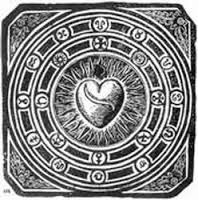A metamorfose da Teologia Natural no encontro cristão com o Helenismo
It remains one of the most momentous linguistic convergences in the entire history of the human mind and spirit that the New Testament happens to have been written in Greek-not in the Hebrew of Moses and the prophets, nor in the Aramaic of Jesus and his disciples, nor yet in the Latin of the imperium Romanum, but in the Greek of Socrates and Plato, or at any rate in a reasonably accurate facsimile thereof, disguised and even disfigured though this was in the Koine by the intervening centuries of Hellenistic usage. As a result of this convergence, every attempt to translate the New Testament into any of almost two thousand languages-including a Semitic language such as Syriac, despite all its affinities with Hebrew and Aramaic-has, on encountering any term, been obliged to consider above all its previous career in the history of the Greek language; and that was a problem of natural theology no less than a problem of philology. It has long seemed unavoidable to invoke this method, for example, when dealing with such a term as logos in the first chapter of the Gospel according to John, or hypostasis in the first chapter of the Epistle to the Hebrews. There was ample precedent for both of these Greek words and for many others like them in the Septuagint translation of the Hebrew Bible, but they had come to the Septuagint and then to the Christian vocabulary from the language of Classical and Hellenistic philosophy and science. And when the last book of the New Testament opened with the salutation, “Grace to you and peace, from ‘he-who-is,’ and ‘he-who-was,’ and ‘he-who-is-to-come’ [charis hymin kai eirene apo ho on kai ho en kai ho erchomenos],” leaving those “christological titles of majesty” and of transcendent being in the nominative even though the Greek preposition “apo” was supposed to govern the genitive, that solecism and “intentional tour de force,” as J. H. Moulton once characterized it, has been used to justify the identification of that eternal “ho on,” the one who is, with the eternal “ego eimi ho on” of the theophany to Moses at the burning bush, but also with the metaphysical “ho on” of Classical Greek ontology. For the word “on” was taken to refer to “continuity and eternity and transcendence over all marks of time.” Historically, the problem of “promoting, advancing, teaching, and diffusing the study of natural theology,” to which the will of Adam Lord Gifford in 1885 dedicated the lectureship that bears his name, may in a sense be said to be one of determining the right answer to such lexicographical questions of continuity; and the present lectures, in keeping with what an earlier Gifford Lecturer called “Lord Gifford’s further stipulation that the lectures may also deal with the history of these problems,” examine one of the most ambitious of all the efforts to find such an answer.
PART ONE: Natural Theology as Apologetics
1. Classical Culture and Christian Theology
2. Natural Theology as Apologetics
3. The Language of Negation
4. God and the Ways of Knowing
5. The Many and the One
6. The Universe as Cosmos
7. Space, Time, and Deity
8. The Image of God
9. The Source of All Good
10. From Tyche to Telos
PART TWO: Natural Theology as Presupposition
11. Christian Theology and Classical Culture
12. Natural Theology as Presupposition
13. The Lexicon of Transcendence
14. Faith as the Fulfillment of Reason
15. The One and the Three
16. Cosmos as Contingent Creation
17. The Economy of Salvation
18. The Metamorphosis of Human Nature
19. The Worship Offered by Rational Creatures
20. The Life of the Aeon to Come
